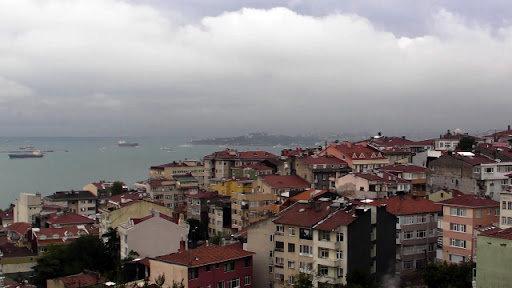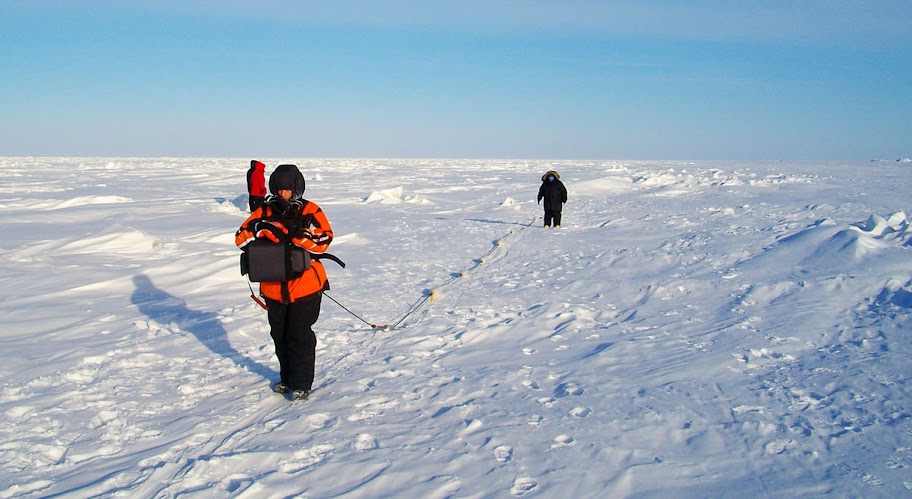1:54 p.m. | Updated The sun rose over the horizon at the North Pole last weekend and the six-month “day” just began there, making this a good time to check in on ice and climate trends up north. I can’t believe it’s seven years now since I spent three days camped on the ice pack near 90 degrees North with a rugged team of climate and cryosphere researchers trying to improve understanding of the complex interface between air, ice and water.
The latest research shows that while a decades-long trend toward thinner and sparser ice looks to continue, with warming from greenhouse gases and soot contributing to the change, expect a lot of variability along the way to a projected open-water summertime Arctic.
When the extent of the pack of sea ice drifting around the North Pole hit a remarkable low in 2007 (animation below), the resulting, and persistent, front-page thought was that the system was in a “death spiral” far more dramatic than any climate model had foreseen.
Even in 2007, some Arctic climate and ice specialists were warning that the ice retreat was “as much a result of ice moving as melting,” adding that the unpredicted changes could just as easily betray weaknesses in climate models as hints of some accelerating meltdown.
A new study scheduled for publication in Geophysical Research Letters supports the earlier research on the importance of winds in shaping the fate of sea ice both year to year and over recent decades. Read more…












 Loading tweets...
Loading tweets...

 Apture allows readers to dig deeper into a subject without ever leaving the blog post. When you click on any link marked by the icons
Apture allows readers to dig deeper into a subject without ever leaving the blog post. When you click on any link marked by the icons 






